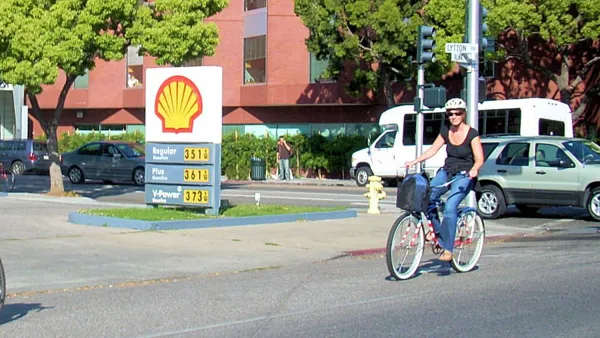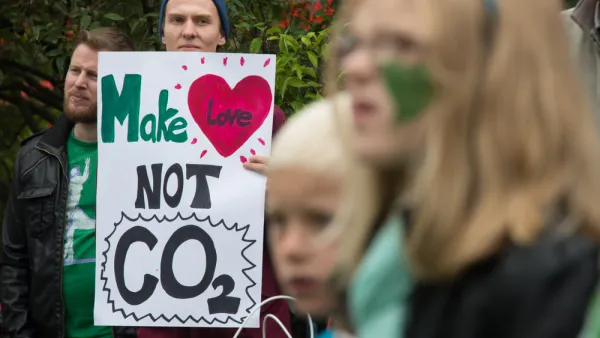Vermont's legislature will take up the carbon tax proposal this week. The tax is construed as largely revenue neutral, i.e., offset by tax decreases and credits, and apply to heating and transportation fuels. Gov. Peter Shumlin has doubts.
"A coalition of 200 businesses, including Ben & Jerry's and Seventh Generation, say it's time for Vermont to be the first state to move forward with a carbon tax," writes Alexei Rubenstein for WCAX News. "The House Natural Resources Committee this week began digging into the issue."
"Two bills introduced in the Vermont House this session would establish a tax on fossil fuels that emit greenhouse gases," writes Rubenstein. "One would impose a graduated $10 per ton of CO2 emissions tax on fuel distributors. It would increase every year until maxing out at $100 per ton."
In both bills, up to 90 percent of the money collected would be offset by reductions in other taxes or tax credits. A portion of the revenue would also fund weatherization projects for low-income earners.
According to an earlier Burlington Free Press article, the tax would not apply to electricity generation as utility companies already participate in the Regional Greenhouse Gas Initiative (RGGI).
"Gov. Peter Shumlin, D-Vermont, has said he supports a regional [as RGGI does for power plant emissions] or national approach, and that Vermont can't do it in isolation," writes Rubenstein. "So far, no state has gone out on its own to tax carbon pollution. Opponents say there's a good reason for that."
California opted to construct a cap-and-trade program that operates in a similar manner as a carbon tax. Motorists pay about 10-cents a gallon to emit carbon from burning gasoline and diesel, on top of carbon charges that oil refineries pay to produce the fuels.
But opponents to the Vermont tax have it right. One reason California chose to go with carbon trading was because a carbon tax was deemed too difficult to pass the legislature. Instead, legislators supported AB 32, which authorized the nation's first state-run (as opposed to regional) cap-and-trade program.
"We already feel the impact of a tax differential on the New Hampshire border," states Shumlin. "The difference in our gas tax [30.46 cents-per-gallon compared to New Hampshire's 23.83 cents] alone is 8 cents right now, and as a result of that, most of the business is down across the border."
Gov. Shumlin's calculation is slightly off because the state gas tax dropped 1.5-cents since January 1 according to the April 1 figures supplied by the American Petroleum Institute [PDF], which needs some explanation because he signed a six-cent increase in gas taxes almost two years ago.
Like so many gas tax increases approved prior to the plunge in gas prices last July, it was based on implementing new or increasing existing retail or wholesale fuel sales taxes while reducing per-gallon excise taxes [see "notes" in API (PDF)]. Who could have predicted decreasing gas taxes would result from increasing gas taxes due to the precipitous fall in gas prices?
Advocates point to efforts in Oregon and Washington to adopt carbon taxes (or carbon fees) as well.
Hat tip to AASHTO Daily Transportation Update.
FULL STORY: Vermont businesses line up behind carbon tax

National Parks Layoffs Will Cause Communities to Lose Billions
Thousands of essential park workers were laid off this week, just before the busy spring break season.

Retro-silient?: America’s First “Eco-burb,” The Woodlands Turns 50
A master-planned community north of Houston offers lessons on green infrastructure and resilient design, but falls short of its founder’s lofty affordability and walkability goals.

Delivering for America Plan Will Downgrade Mail Service in at Least 49.5 Percent of Zip Codes
Republican and Democrat lawmakers criticize the plan for its disproportionate negative impact on rural communities.

Test News Post 1
This is a summary

Test News Headline 46
Test for the image on the front page.

Balancing Bombs and Butterflies: How the National Guard Protects a Rare Species
The National Guard at Fort Indiantown Gap uses GIS technology and land management strategies to balance military training with conservation efforts, ensuring the survival of the rare eastern regal fritillary butterfly.
Urban Design for Planners 1: Software Tools
This six-course series explores essential urban design concepts using open source software and equips planners with the tools they need to participate fully in the urban design process.
Planning for Universal Design
Learn the tools for implementing Universal Design in planning regulations.
EMC Planning Group, Inc.
Planetizen
Planetizen
Mpact (formerly Rail~Volution)
Great Falls Development Authority, Inc.
HUDs Office of Policy Development and Research
NYU Wagner Graduate School of Public Service





























